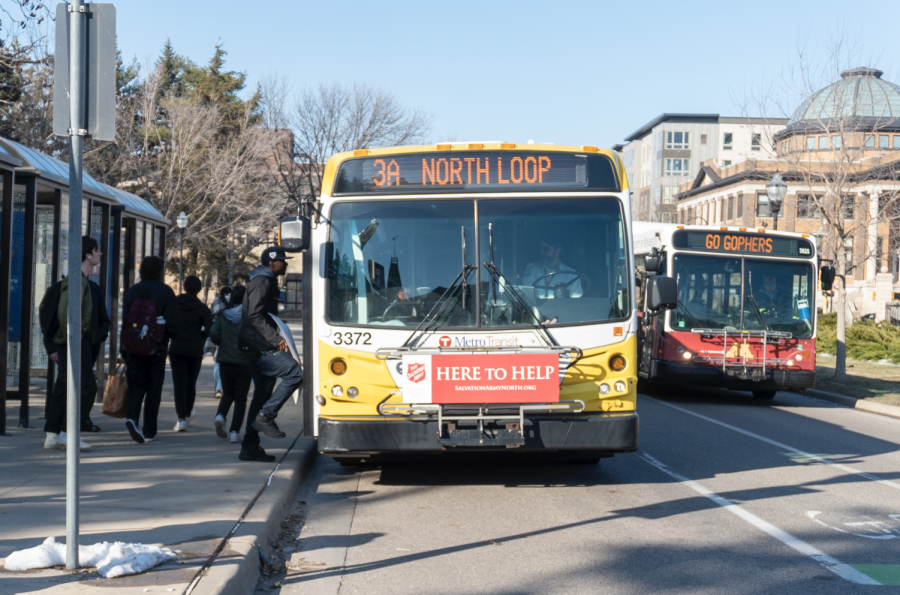As winter draws closer, crews from Nice Ride Minnesota have packed their bikes for the year.
But the end of the bike season also brought new data about Nice Ride — including numbers showing that stations near the University of Minnesota are some of the most used.
A study published recently by four University researchers found that business increases in areas near bike stations. Likewise, those stations near restaurants, malls or other recreational places attract more users.
The team conducted interviews at businesses near the bike kiosks, surveyed Nice Ride subscribers and compared the number of visits from each of the 116 stations around the Twin Cities in 2011.
“The team looked at the areas with the stations and found that people who are arriving by bicycle spend a little bit more money,” said Bill Dosset, executive director of Nice Ride Minnesota. “I guess the concept is they are moving and buying.”
An average of $7 to $14 was spent per Nice Ride trip on shopping, dining and entertainment at local businesses, totaling $150,000 over the season, according to the study.
A bike station’s success correlated with its proximity to a food, shopping or recreation-related business. The proximity to food or retail was also a key factor in determining its location, Dosset said.
Nice Ride planners also look at the area’s accessibility to recreational bike routes and the area’s population density.
“The study definitely showed a positive relationship between the number of trips to the station and the number of food-related businesses nearby,” said Jessica Schoner, the chief author of the report and a University graduate student. “The proximity of food-related businesses was a really good predictor of how well the station was doing.”
As of late August 2012, the IDS Center downtown and the station at St. Anthony Main were the two most popular kiosks with a combined 13,000 rentals, according to a Nice Ride report.
Nice Ride estimated 2012 was the best year yet with 275,000 rentals.
Two stations on the University campus were ranked in the top-10 most popular in 2011, according to the study. Dosset said he works “really closely with the University’s transportation department to select the locations that would be best.”
Schoner said the Nice Ride season of April through November is almost opposite of the academic school year and that affects the research.
“I think if we were to look at the system at a finer level, maybe by month, we would see the [University] having a much bigger impact in terms of their overall usage,” Schoner said.
Alexander Matson, economics senior and president of the University’s Cycling Team, said the Nice Ride bikes “have provided a topic of conversation here at the U.”
“They are a much easier way to bike rather than having to worry about the logistics of riding or the stress of possible theft,” Matson said. “I don’t know many hardcore cyclists that use the Nice Rides, but they definitely raise awareness and get people on bikes.”
Accounting senior Charles Kranz, another member of the cycling team, said that Nice Ride bikes “serve their purpose,” but he thinks it’s better to own a bike.
“I see them getting used around campus and throughout the Twin Cities a good amount,” Kranz said. “In my opinion, people who are serious about biking will probably just buy their own bike for getting to class and stuff.”
Geography doctoral candidate Bill Lindeke agreed, saying that Nice Ride bikes are “starter bikes” for people who are uneasy about tackling the city’s busy traffic and complicated routes.
“One of the big barriers people have about riding a bicycle around the city is it’s scary; it’s intimidating,” Lindeke said. “You see people wearing all this equipment, and you don’t really understand the bicycle
perspective.”
Lindeke specializes in non-motorized transportation. For his research, he interviewed people riding the Nice Ride bikes and talked to planners from the system as part of his study on bicycle advocacy that began last spring.
“People I’ve been talking to see them as gateway bicycles,” Lindeke said, “like that whole idea of a gateway drug. You start with these.”
Dosset said it’s too early to decide if any stations on campus will be moved for next year’s season. He plans on using the winter months to make those decisions.
“We’re looking at some changes this year that will mostly be along the river,” he said. “For example, down on Franklin near the river front — that’s a location by campus that will be a really great spot for a bike station.”
The University campus has been in a transition period with the construction, but Dosset said he plans on strategically placing the stations in the coming years in conjunction with the path of the Central Corridor light rail.
“We are always re-evaluating and trying to add more stations,” Dosset said. “There’s a lot going on in the city right now, and I hope we are creating a more vital and vibrant place.”
















